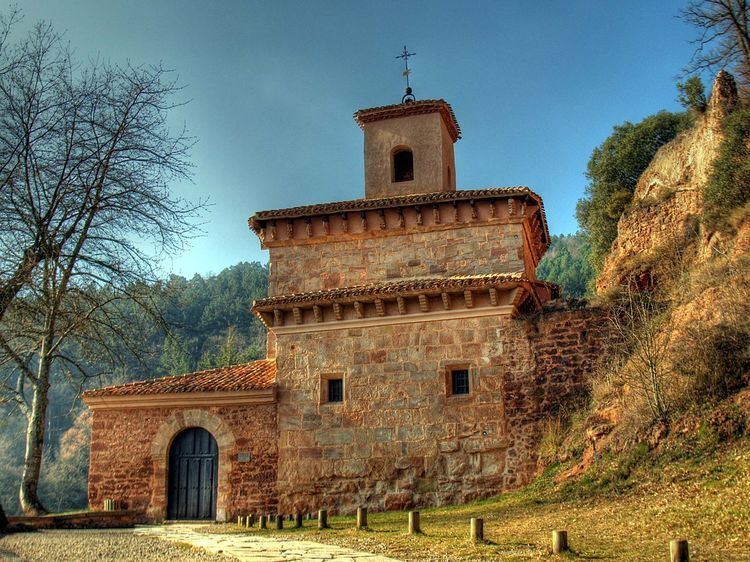Criteria ii, iv, vi Province La Rioja UNESCO World Heritage Site inscription 1997 | Type Cultural Reference 805 Phone +34 941 37 30 49 Burials Toda of Pamplona | |
 | ||
UNESCO region Europe and North America Official name Monasterios de Yuso y Suso Similar Suso Monastery, Santa María la Real of N, Monastery of Nuestra Señora d, Abbey of Santo Domingo, Sierra de la Demanda | ||
The monasteries of san mill n de la cogolla
The monasteries of San Millán de Suso (6th century) and San Millán de Yuso (11th century) are two monasteries situated in the village of San Millán de la Cogolla, La Rioja, Spain. They have been designated a World Heritage Site by UNESCO since December 1997.
The two monasteries' names Suso and Yuso mean the "upper" and the "lower" in archaic Castilian, respectively. Suso is the older building and is believed to be built on the site of a hermitage where Saint Emilian (Spanish: San Millán) lived. Perhaps Suso's major claim to fame is as the place where phrases in the Spanish and Basque languages were written for the first time. UNESCO acknowledges the property "as the birthplace of the modern written and spoken Spanish language". The phrases in Spanish and Basque are glosses on a Latin text and are known as the Glosas Emilianenses. There is some debate as to whether the Spanish words are written in an early form of Castilian or in a related dialect. In either case, San Millán's importance as a cradle of the Spanish language is reinforced by the proximity of the village of Berceo which is associated with Gonzalo de Berceo, the first Spanish poet known by name.
There is a continuous history of Christianity at San Millán since the time of the saint. The scriptorium produced the second phase of the San Millán Beatus and remained active during the period of Muslim rule; and over the centuries, the religious community has overcome various vicissitudes which affected the monasteries (for example being sacked by the Black Prince). However the type of monastic life evolved: the original monks living at Suso were hermits, but Yuso, the refoundation of the monastery on a lower site, developed as a Benedictine community. As the UNESCO evaluation noted, San Millán shows the transformation from an eremetic to a cenobitic community in material terms.
Suso monastery has been uninhabited since the Ecclesiastical Confiscations of Mendizábal in the nineteenth century. Yuso monastery was also abandoned for some years in the nineteenth century, but was reoccupied. It houses an Augustinian community, but part of the monastery has been converted into a hotel. Today San Millán attracts pilgrims on the Way of St James (even though it lies somewhat off the line of the official route between Nájera and Burgos).
